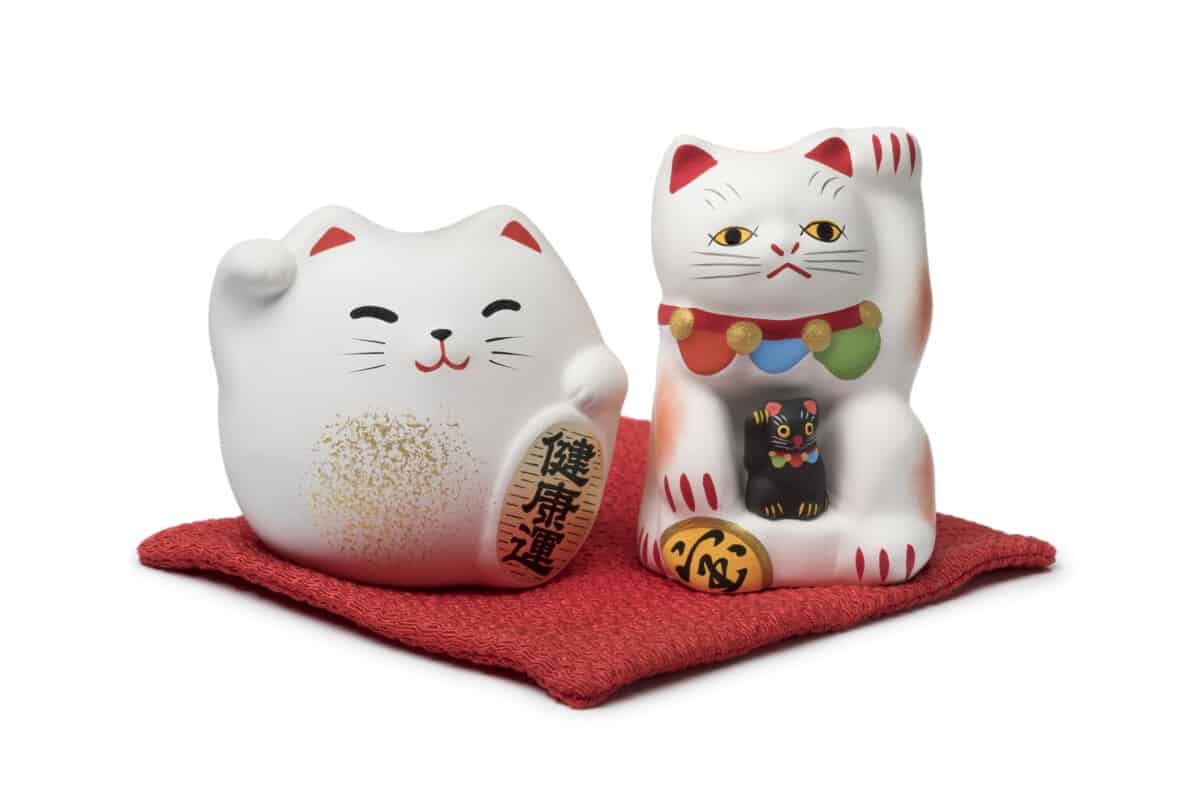It is truly fascinating to learn about how certain things are considered sacred in different cultures. In Japanese culture, there are many items that they believe to have great significance. Being a country that is very spiritual, they also have many good luck charms and statues that they believe can manifest good luck.
Japan has also been a country for millennia, although some might not be aware of this fact. Due to how long the country has been in existence, there have been ample opportunities for traditions and folklore to be passed down through generations.
Many of the symbols and charms important to Japanese culture are rooted in its history.
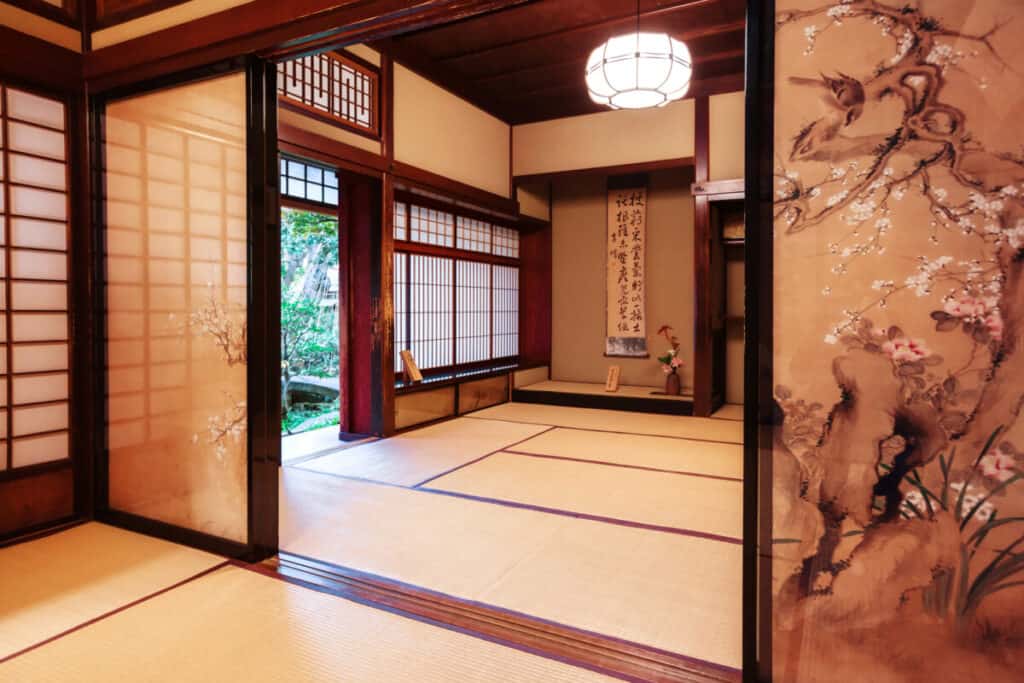
Being that there are many things that Japanese culture teaches can bring misfortune, or are naturally bad omens, knowing what can counteract that is extremely important to those who believe.
Below are some of the most prominent and well-known symbols of good luck that you might see when visiting a Japanese home that you might also consider bringing into your home for good luck.
Frogs
A frog is a symbol of good fortune because of how its Japanese name has a double meaning. The word kaeru means frog, but it also means to return. It is interpreted that a frog will be a good luck charm that will allow you to return home safely after traveling.
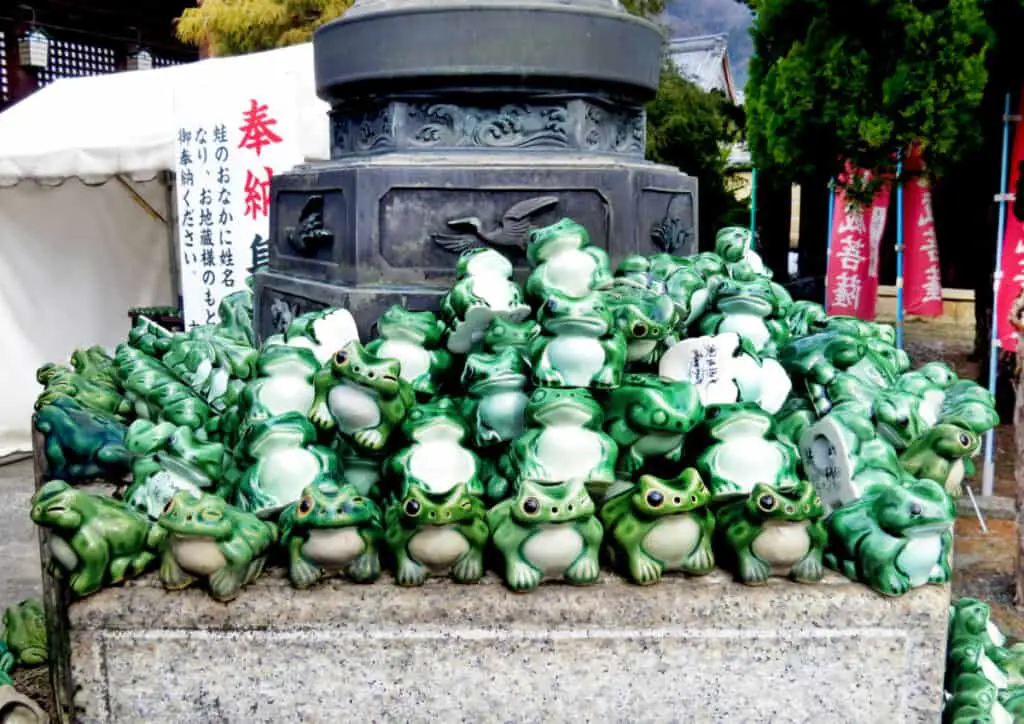
Thus, having a frog with you when you are traveling can help bring you peace. Consider a small charm that you can wear on a bracelet or necklace, or even attach to your luggage or your handbag.
A frog can also have an effect similar to karma. Since the meaning of the Japanese word for frog means to return, it’s believed that they can manifest a return of what you put into the world.
For example, if you donate a lot of your time to worthy causes, the frog can help bring you good fortune in your own life when you need it.
Koi Fish
Koi fish are a well-known fish associated with Japan. They are held very dear in the eyes of Japanese people.
This is partially why many places of importance in Japan, including temples, will have koi ponds surrounding them with plenty of koi swimming around.

Koi fish are really strong swimmers and can swim long bodies of water. Thus, it is said they symbolize willpower and determination for being able to take on such an arduous task. Koi fish are also commonly believed to be a symbol of good luck and health.
Omamori
An omamori is something that can be purchased at a shrine that you can hold with you or have displayed in your home. An omamori is a talisman, which is an object that holds great fortune and power, placed in a decorated bag. The decorated bag is usually made with a delicate material such as silk.
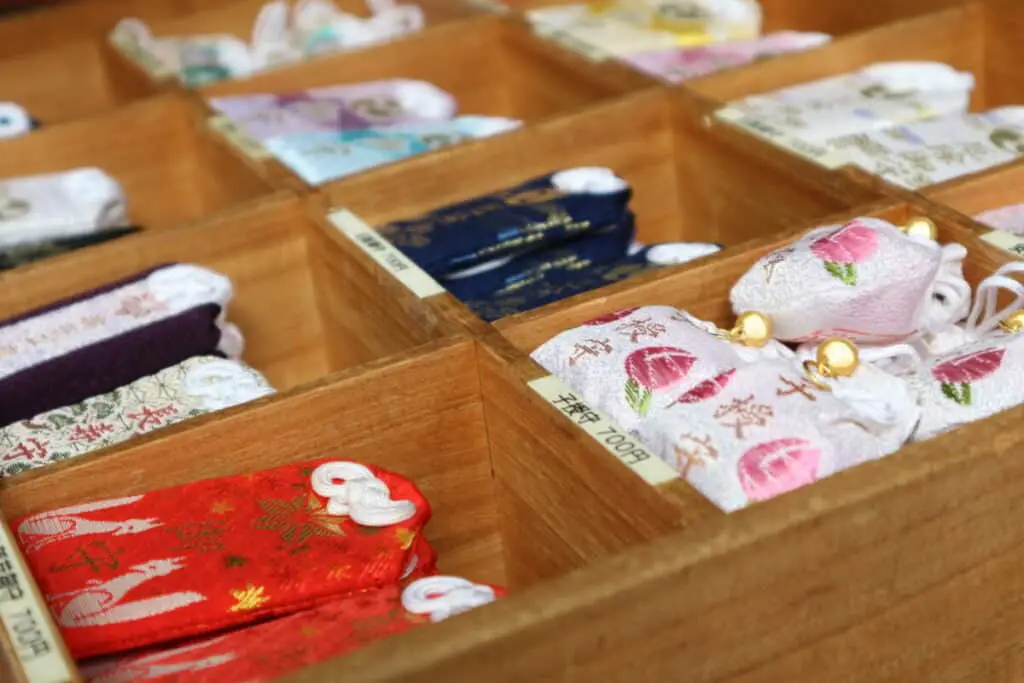
Within the bag, there are also sometimes prayers or well wishes written on paper and placed inside. The talisman must be kept in the bag at all times, and you are never to open the bag to try and get a glimpse of the talisman.
An omamori can be a good luck charm, or it can be blessed for a specific purpose. Some examples of omamori blessings include healthy pregnancies, good general health, or good luck in educational endeavors.
Daruma Dolls
A daruma doll is a figurine that is designed to resemble Bodhidharma, who is the creator of Zen Buddhism.
These dolls will have large eyes that are empty, as they are meant to be filled in by the purchaser when they are making a wish. When the wish manifests itself, you are meant to fill in the other eye.
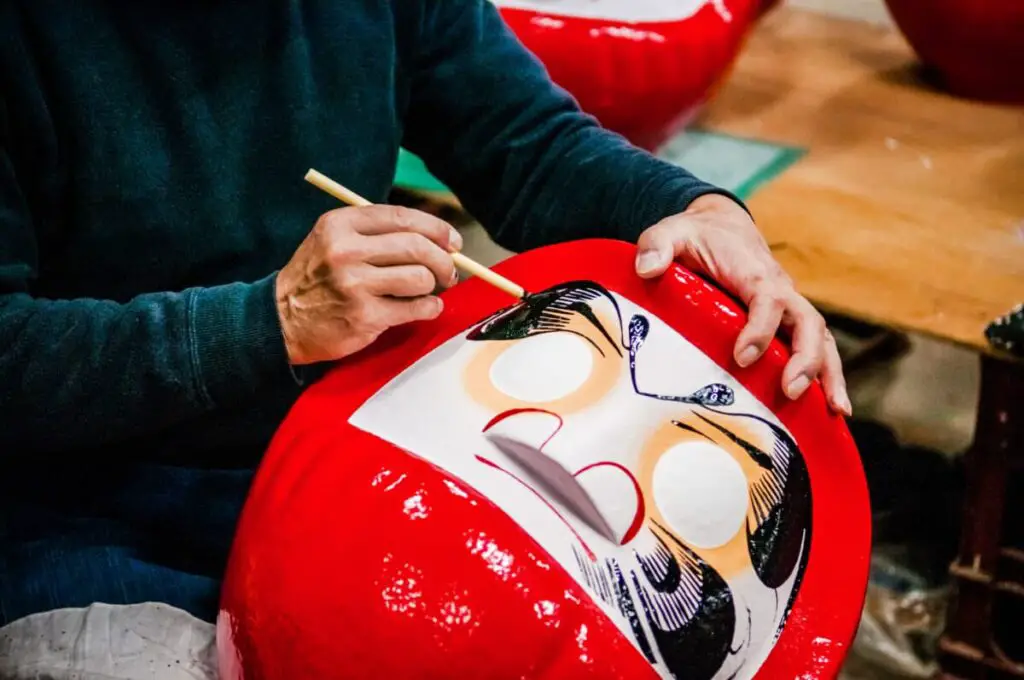
Most of these dolls are round, and they are painted with very beautiful and intricate details. Most of the dolls will be painted in red clothing as well.
They come in various sizes, and they are hollow inside. They also come in colors other than red, with each color symbolizing something different.
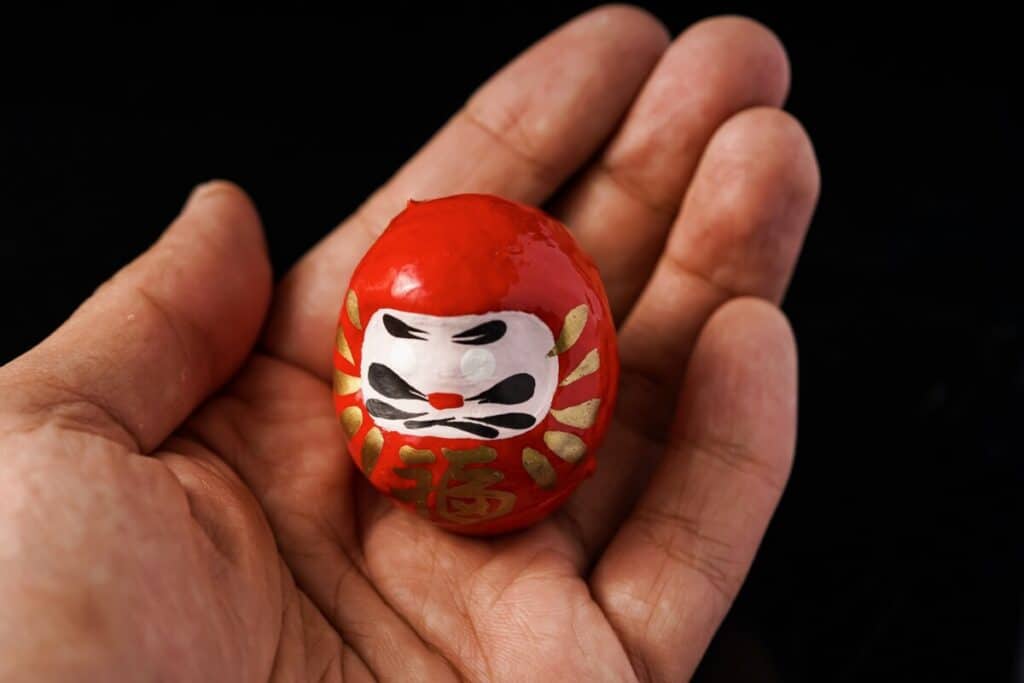
For example, having a gold daruma doll within your home exemplifies wealth, and so it should bring you luck with money. A white daruma doll is said to invoke love, so having one in your home should help bring peace and adoration to all who live there.
Kit Kat Bars
This might be surprising, but it also might not be, as Japan is known for its unique takes on the traditional Kit Kat bar. They tend to have fun with Kit Kat bar flavors and colors as Kit Kats brought Japan a lot of success when they were first introduced to the country.
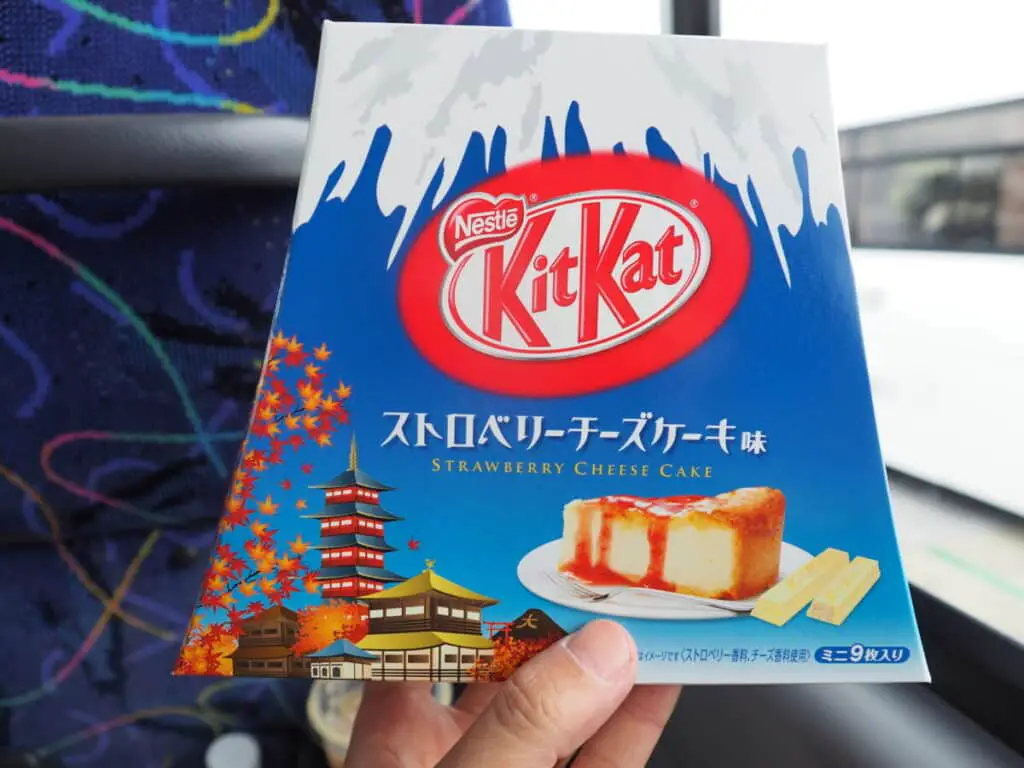
Part of what makes them lucky is their name, as it’s very similar to the Japanese term kitto katsu, which translates to surely win.
Therefore, they are often given as gifts to those who could make good use out of some good luck. For example, they are given to students before they take an important test or exam.
Maneki Neko
The Maneki Neko is a fairly well-known Japanese good luck charm. It’s a figurine of a cat, typically with one paw in the air, with a smile on its face.
Sometimes both paws are seen in the air, and sometimes the cat is holding something in its other paw. There are also some Maneki Neko that will not be smiling; they just have a blank expression.
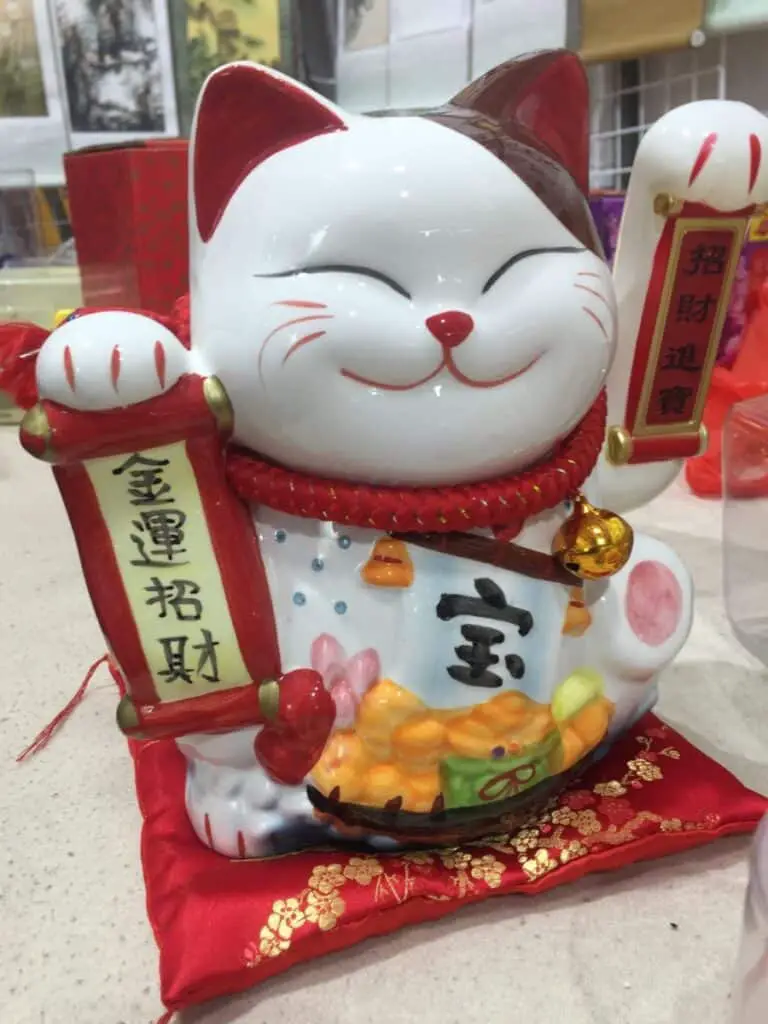
The cat is also known as the beckoning cat, as it’s believed that the raised paw symbolizes the cat beckoning something towards them. Their name also translates to beckoning cat.
As they are symbols of good luck, they will often decorate the entrance of a home or shop. They are also fairly easy to find in souvenir shops.
If the cat has gold on them, it’s representative of bringing in fortune and wealth. If they have black on them, it’s to keep evil spirits and negative energy away.
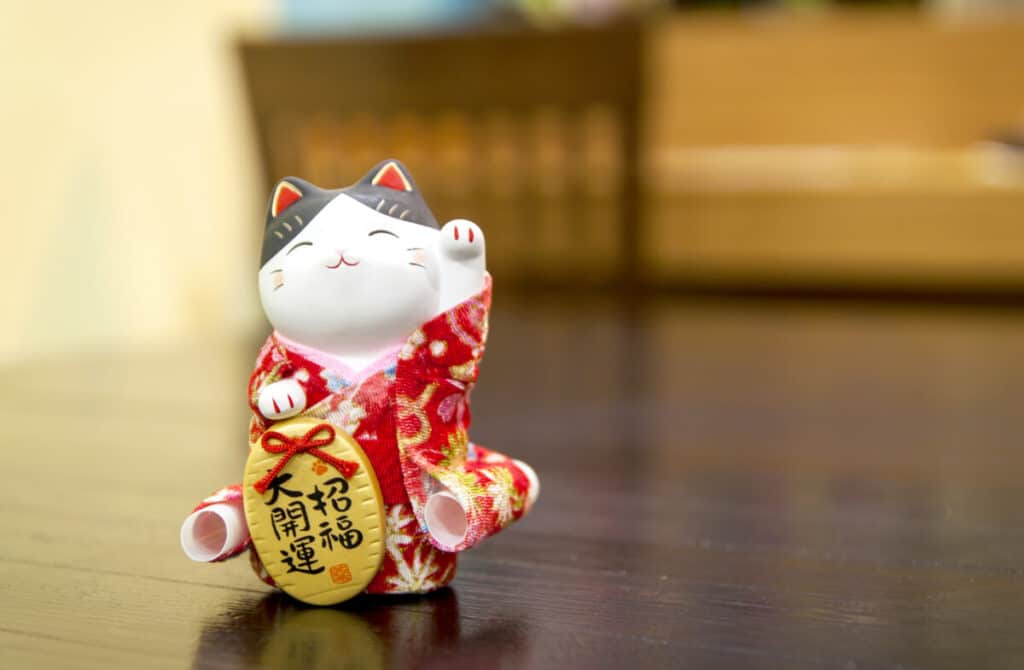
The Maneki Neko is also fairly commonly seen in other parts of the world since it’s one of the most well-known symbols of good luck from Japan.
Cranes
The paper crane is known as an important symbol in Japanese culture. This is because of the luck they are said to bring, as well as because of their ability to make wishes come true.
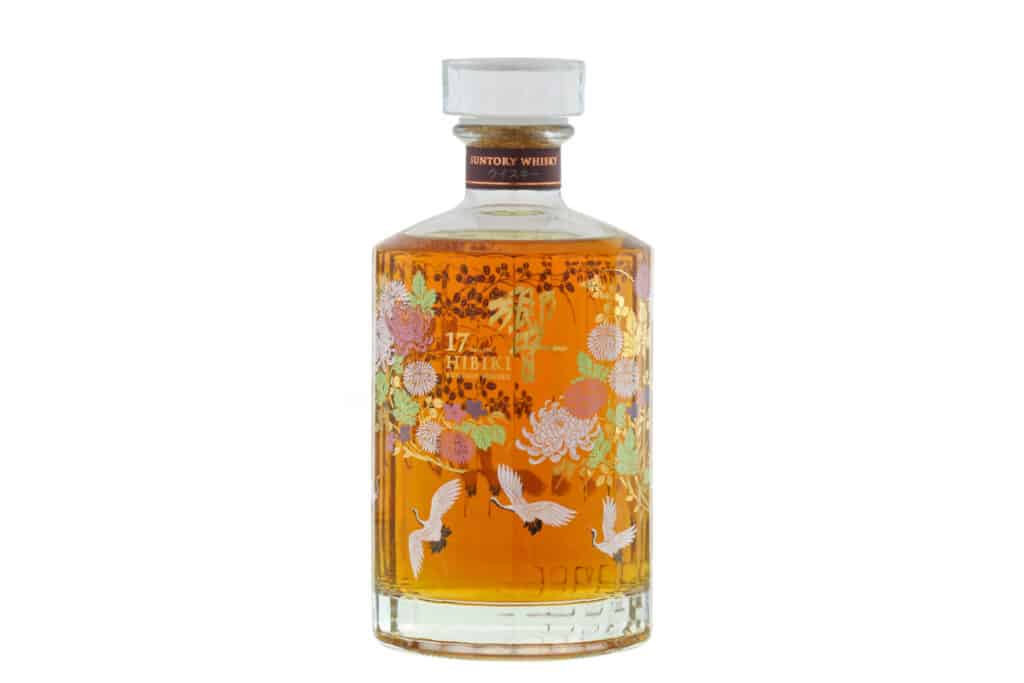
Cranes are often seen decorating certain festivities, including weddings and New Year’s parties. There is an old tale well known in Japanese culture that marks the origin of this symbolism.
The story revolves around Sadako Sasaki, who made 1000 paper cranes and subsequently wished upon them. Sadako was a young girl who was wounded by the Atomic Bomb.
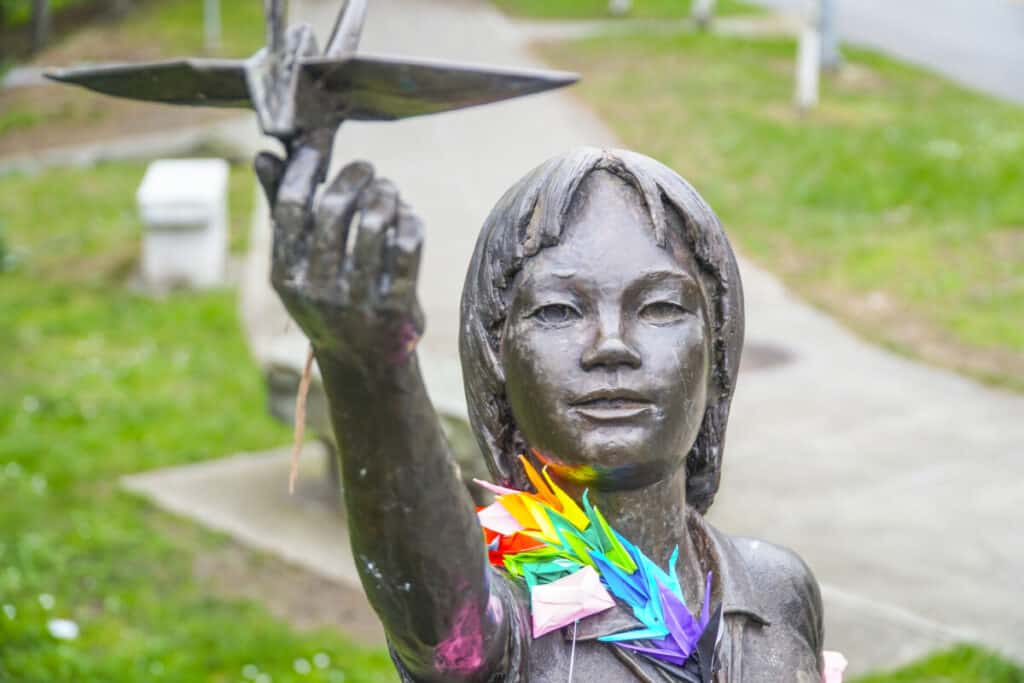
When she was in the hospital, she folded 1000 paper cranes so she could be granted a wish. This practice is now known as Senbazuru, and is said to bring healing to those who complete this task.
Hotei
The Hotei is more well-known as the laughing Buddha. Hotei is one of the seven gods of fortune in Japanese culture. Thus, having a statue of him in your home is supposed to attract fortune to your life.
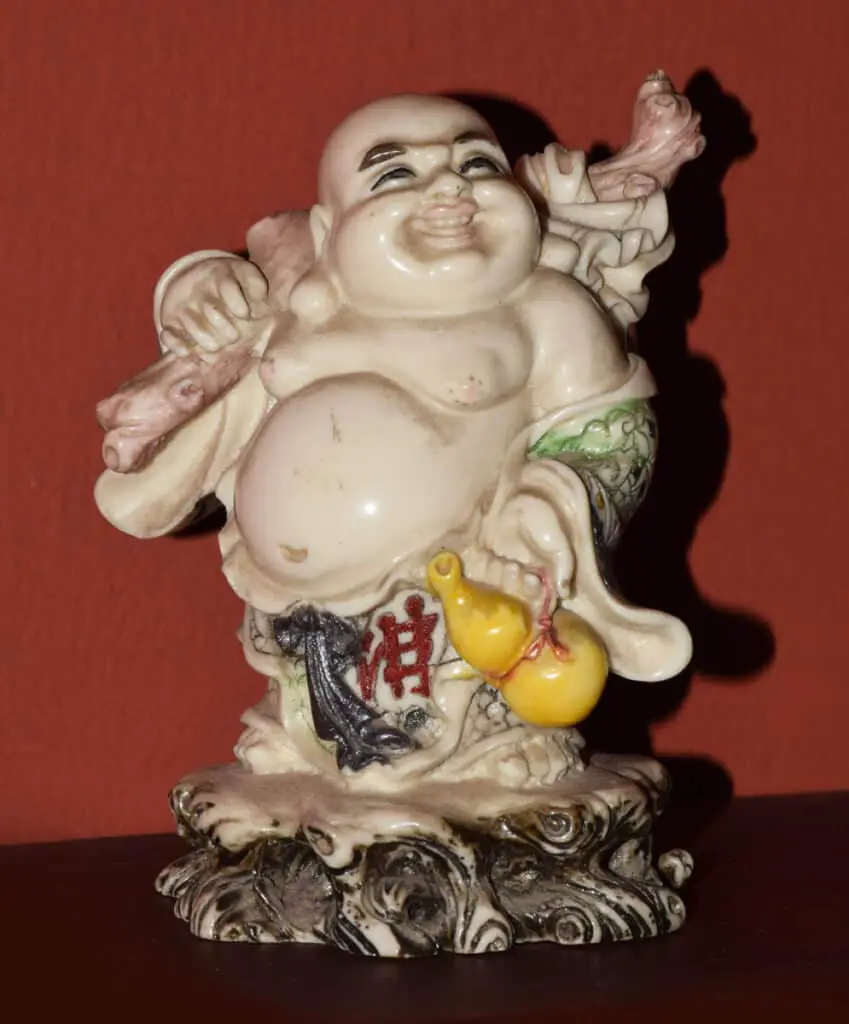
In most depictions of Hotei, he is holding a chain with beads in one hand and a bag.
As the name implies, he also has a really big smile on his face, appearing to be mid-laugh. Having a statue of Hotei in your home or your business is supposed to help bring you wealth and good health.
Tanuki
Tanuki has a very vast and interesting history in Japan. A Tanuki was believed to be a mythical creature that could shapeshift, but they are also real animal that mainly lives in Japan. The Tanuki is a raccoon dog, but they resemble dogs and are pretty small.
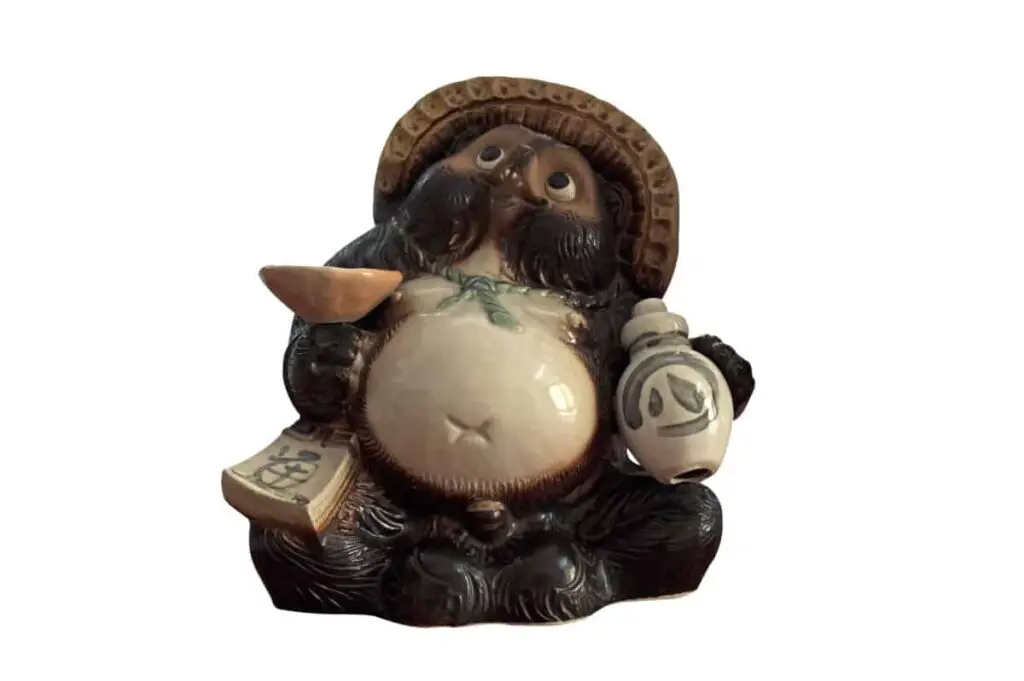
Modern statues of Tanuki have a lot of distinct features that all represent the different positive things a Tanuki can manifest in your life.
One of the most noticeable features is a giant scrotum. While this may shock some people, the testicles are actually supposed to symbolize vast wealth.
The Tanuki statues also have features such as a straw hat, a big belly, big eyes, and a bottle or flask of sake.
Daikokuten
Daikokuten is a god of prosperity and good luck in both Hindu and Buddhist faiths.
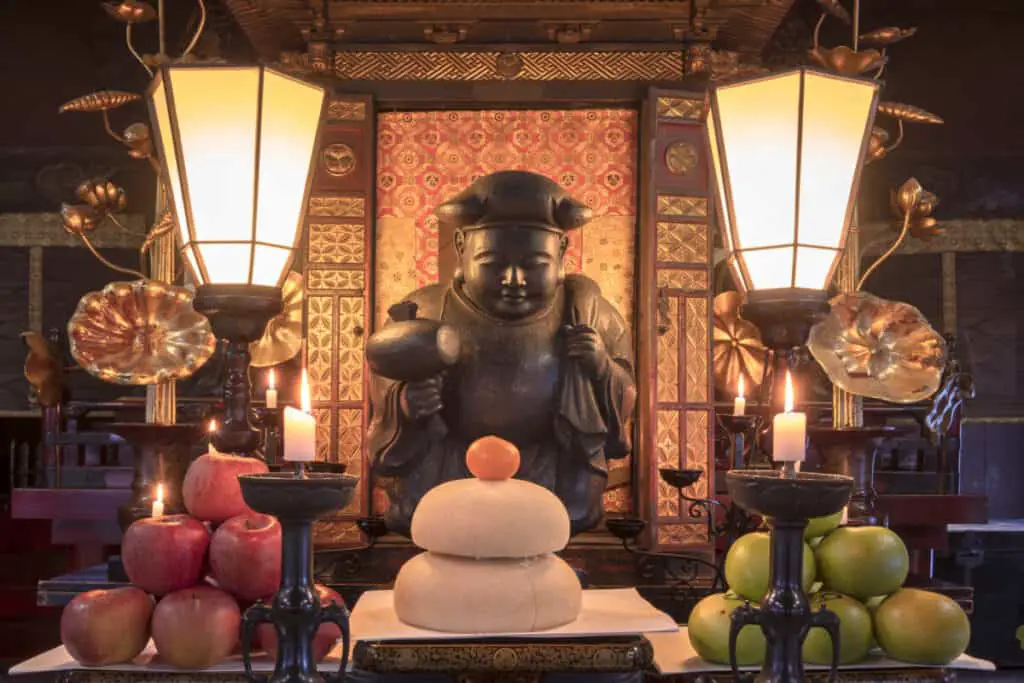
He is also one of the seven gods of luck in Japanese culture. Statues of Daikokuten are commonly seen decorating homes and stores in Japan, due to how they are supposed to help attract good luck.

